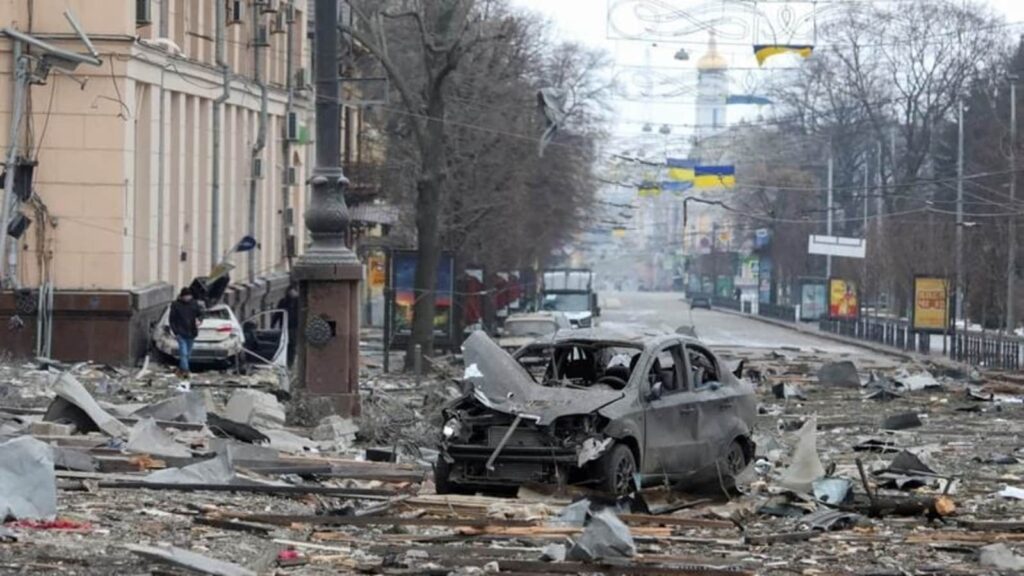
…With Immeasurable Cost and Uncertainty…
The western political discussion on Ukraine remains largely focused on military support and keeping Ukrainian forces supplied with weapons and intelligence to win the war. And, as the conflict approaches seven months with Ukraine’s brutal winter around the corner, leaders on both sides of the conflict understand that positioning at the end of the next couple months may dictate peace discussions (if any) as snow and below freezing temperatures lock both sides in place.
European and American leaders continue to pledge more weapon and ammunition deliveries coupled with financial support (Ukraine received another $1.5 billion from the U.S. via the World Bank trust on 17th September). But it is a peace agreement that the international community is hoping may come with the winter as many leaders face a litany of economic issues, including a potential recession, at home.
A peace agreement could help prevent a European energy crisis. Though it is not exactly obvious how Europe finds an agreement in the short term with Russian gas giant Gazprom (and indirectly with Russian President Vladimir Putin) when the Nord Stream gas pipeline to Europe is unsurprisingly being used as a weapon by Russia with the occasional shut downs for maintenance.
The Extremely High Cost of War
Peace is also top-of-mind as foreign ministers and finance ministers across Europe appropriately start to publicly discuss the financial cost of this war today (as it drags on) and in the future when the international community must help rebuild Ukraine.
Given the mass destruction inflicted on Ukraine’s infrastructure, including housing and transport, it is not plausible that Ukraine would self-finance its recovery and physical reconstruction.
The recent news out Izyum following the recapture of the city by Ukrainian forces speaks to these challenges. It may be months before water and electricity returns to the entire city as Russia obliterated the infrastructure of the city during five-plus months of occupation. Rebuilding a country is evidently a greater task than reconstructing a city, and will be a long and costly endeavor with significant uncertainty related to the financial and mental willpower of Ukrainian allies to support the recovery over what may be years or (dare we say) a decade.
Ukrainian Prime Minister Denys Shmyhal has already suggested the financial bill may be $750 billion. The World Bank estimates that the cost of fixing civilian buildings may be $200 billion so far. The final number is clearly dependent on when the war ends and what the international community is actually prepared to pay.
Some leaders in the international community have suggested the re-appropriation of sanctioned and confiscated Russian assets (and related cash flows) to the Ukrainians. This however is not a straightforward exercise and may not exactly deliver the level of financial support expected by even the most optimistic economists.
There also is not an established precedent on how the $300 billion belonging to the Russian Central Bank sitting outside Russia could necessarily be legally tapped by the international community to foot the Ukrainian bill. And it is hard to imagine a scenario where Russia agrees to pay reparations as part of a peace agreement (unless it loses the war…and even then it is still not a certainty). Lastly, most estimates for rebuilding the country do not account for the similarly costly and time consuming process of rebuilding the Ukrainian economy. The country is currently running a budget deficit of about $80 billion with a financing gap on its monthly payments of about $5 billion (thus the Memorandum of Understanding with the G7 countries and the Paris club on 14th September to suspend debt payments). We should assume that the more money spent today to keep the economy afloat will eat into future funds the international community theoretically assumed (or planned) could be used in the aftermath of the war.
The Ukrainian Marshall Plan
More than 75 years ago, then U.S. Secretary of State George Marshall introduced the idea of the European Recovery Program (ERP) – commonly referred to as the Marshall Plan today – which entailed the U.S. providing loans to finance reconstruction of Europe in aftermath of World War II. It is estimated that, between 1948 and 1952, more than $12 billion (about $150 billion in today’s dollar) was provided to 16 different countries.
The United Kingdom received approximately 25% of the money (or roughly more than $35 billion in today’s dollar) provided under the Marshall Plan. That is ‘peanuts’ compared to Prime Minister Shmyhal’s estimate of $750 billion. That said, capital markets are more developed today and capable of supporting (or, more so, working in conjunction with) the financial efforts of governments supporting Ukraine. Does this get Ukraine the $750 billion or potentially $1 trillion required when the war ends? Unlikely.
Nevertheless a Marshall-lite Plan that focuses on more targeted and necessary infrastructure, i.e. ports for export of grain, agriculture, and power, could be an option. European (and U.S.) efforts would also represent a huge step towards codifying Ukraine’s potential entrance into the EU.
The West can expect Ukraine to become (or remain) the contentious border country for the EU with Russia and to be a likely sphere of conflict (officially and covertly) for the next several years between the West and Russia (and its allies)…that informal type of engagement is a bill that no one can estimate.
Thus, as the war goes on with no clear end in sight, the international community can celebrate gains by the Ukrainians but it is hard to appreciate (and measure) the challenge of aligning political perspectives and pocketbooks of countries (with very different local populations who have their very different views of the world) for an extended period of time. A Ukrainian Marshall Plan will accordingly be both a test of financial will and psychological strength over time, especially if Russia finds a way to normalize relations again with the greater international community (effectively abating the Western alliance currently centered on Russia as a shared enemy).
